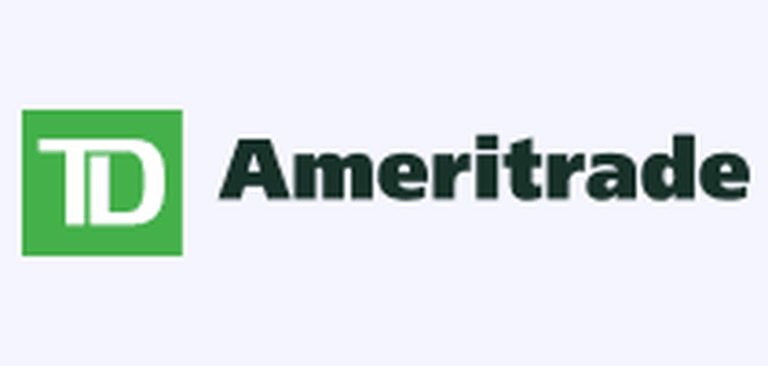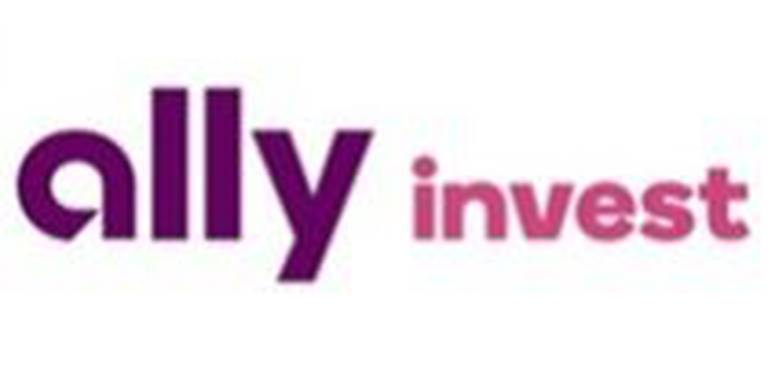While bonds and CDs are similar in many ways, they are distinctly different investment options, each with its pros and cons. It’s important to understand how they work and how each can fit into your portfolio before you start investing.
What is a Bond?
Bonds give investors a way to loan money to governments, companies, and other organizations. When a government or other entity wants to borrow money, it can sell bonds. People who buy those bonds are lending their money to the entity selling the bond.
Like most forms of debt, the borrower has to pay interest to the lender and eventually return the amount borrowed. Typically, bonds make interest payments twice per year. Once the bond matures, the borrower repays the amount it borrowed and the lender stops receiving interest payments.
For example, if you buy a $1,000 bond with an interest rate of 5% and a maturity of ten years, the bond issuer will make two payments of $25 each year for the next ten years. Once the ten-year period ends, the bond will mature and the bond issuer will make a final payment of $1,025: $25 of interest and $1,000 to return the amount it borrowed.
The bondholder will have received twenty payments of $25, for a total of $500, plus the $1,000 they originally invested.
Benefits of Investing in Bonds
There are many benefits to investing in bonds.
One benefit of bonds is that they typically offer better interest rates than CDs. Businesses, organizations, and governments can all sell bonds. Like people, these organizations can have different credit ratings. The better the credit rating of the entity selling the bond, the lower the investment risk, but the lower the interest rate.
For example, a bond issued by the U.S. government will likely have a lower interest rate than one issued by a corporation. This reflects the lower risk that the U.S. government will default on the loan.
This means that people investing in bonds can look for bonds that fit their ideal risk and return.
Bonds also let investors turn their money into a source of income. If you have a $500,000 portfolio and want to turn that money into a stream of income to support you in retirement, investing in bonds is an easy way to get that income. If you build a portfolio with an average yield of 4%, you can get $20,000 each year that you can use to supplement your other income.
Related: Are Savings Bonds a Sound Investment?
Drawbacks of Investing in Bonds
There are drawbacks to investing in bonds.
One is that bonds are not risk-free. If the entity that sold the bond goes bankrupt, you’ll stop getting interest payments and lose out on your initial investment.
For example, if you bought a $10,000 bond from a company and that company goes bankrupt a year later, you’ll lose the $10,000 you invested. By comparison, CDs are insured for up to $250,000, making them far less risky.
Bonds can also lose value. With most bonds, you can sell the bond to other investors if you need to get your money back before the bond matures. However, bonds can lose or gain value over time.
If market interest rates fall, then the price of existing bonds tends to rise. If market rates increase, then the price of existing bonds will drop. If you bought a bond when rates were low, you might have to sell the bond for less than you initially paid.
Related: Is There an Alternative to Bonds or Should You Stay Put?
How to Buy Bonds
There are two ways to buy bonds.
One is to buy individual bonds directly from the organizations issuing the bonds or from other investors who want to sell their bonds.
If you want to buy U.S. government bonds, you can buy them directly from the government through the Treasury Direct website. If you’re looking to buy other kinds of bonds, you’ll need to work with a brokerage.
The other way to purchase bonds is to buy shares in a mutual fund or exchange-traded fund (ETF) that holds bonds. Investing in a fund that holds bonds lets you diversify your investment across tens of thousands of bonds while only having to buy shares in a single security.
If you buy individual bonds, it will be harder to build a diversified portfolio. If you buy a bond and that bond issuer later goes bankrupt, it could have a huge impact on the value of your portfolio. Investing in a fund that owns thousands of bonds greatly reduces that risk.
The drawback of investing in funds is that you have less control over the bonds that it purchases. Mutual funds and ETFs also charge a fee, called an expense ratio, to cover the costs of running the fund. These fees will reduce your returns in the long run.
Related:
Where to Buy Bonds
Unless you’re buying bonds directly from the United States government, you’ll need a brokerage account to buy bonds or bond funds. These are some of our favorite options.
TD Ameritrade

TD Ameritrade is an online brokerage company that helps customers invest in a wide range of securities, including bonds and bond ETFs, and mutual funds. There is no minimum balance required to open an account, which means anyone can use TD Ameritrade to start investing.
There are no commissions if you want to invest in bond mutual funds or ETFs, but TD Ameritrade does have a $1 per transaction fee if you buy and sell individual bonds. Read more: TD Ameritrade Review
E*TRADE

E*TRADE is another online brokerage company with no account minimum and no commissions for many transactions, including buying and selling stocks, mutual funds, and ETFs.
E*TRADE offers free purchases of newly issued bonds from the government and other bond issuers but does charge a commission if you buy and sell bonds on the market. The charge is $1 per bond involved in the trade, with a minimum fee of $10 and a maximum fee of $250. Read more: E*TRADE Review
Ally Invest

Ally Invest is a brokerage account provided by Ally Bank, a well-known online bank.
Ally is known for its fee-free bank accounts with no minimum balance. Ally Invest is similar, with no account minimum and no commission for trades of stocks, bonds, mutual funds, ETFs, and many other securities. That makes it easy to open an account and start investing.
If you want a more hands-off approach to investing, you can also sign up for Robo Portfolios. This robo-advisory service has a minimum account balance of just $100 and charges no advisory fees, annual fees, or rebalancing fees. Read more: Ally Invest Review
What is a CD?
A Certificate of Deposit (CD) is very similar to a savings account. You can open a CD at a bank and deposit money into the account. The bank pays interest on the CD based on the interest rate and the amount that you deposited.
Typically, CDs offer a higher interest rate than savings accounts. This is because you have to give up some flexibility when you open a CD.
With a savings account, there may be some limits on the number of withdrawals you can make each month, but you’re generally free to add or withdraw funds whenever you’d like.
With a CD, you must select a term for the account when you open it. During this term, you are not allowed to make additional deposits or withdraw money from the CD. When you open the account and choose a term, you’re committing to leaving that money with the bank until the term ends.
Once a CD’s term ends, the CD matures. You then have the option to withdraw the money or open a new CD.
In general, the longer a CD’s term, the higher the interest rate of the CD. Once you’ve opened a CD, its interest rate won’t change. This can be good if market rates drop, but you might get stuck earning a lower interest rate if market rates rise and your money is still stuck in a long-term CD.
If you do need to take money out of a CD before it matures, the bank will charge an early withdrawal fee. The fee is typically based on the amount of interest you earn each day and CDs with longer terms charge higher fees.
Related: The Best 12 Month CD Rates of 2022
Benefits of Investing in CDs
One of the greatest benefits of buying a CD is certainty. CDs are covered by FDIC insurance. While bond issuers can go bankrupt, leaving you holding a worthless bond, that can’t happen with a CD. FDIC insurance covers up to $250,000 per account holder at insured banks.
CDs also tend to have shorter terms than bonds. It’s not unusual to buy a bond with a maturity date of ten to thirty years. By contrast, you can often find CDs with terms ranging from three months to five years.
Learn More:
- 10 Types of CDs--Which Certificate of Deposit is Best for You?
- Best IRA CD Rates
- How (and Why) to Create a CD Ladder
Drawbacks of Investing in CDs
One drawback of investing in CDs is that, in some ways, they are less flexible than bonds.
With a bond, you can sell the bond to another investor if you need to get your initial investment back. You may lose some money if rates have risen since you bought the bond, but there’s also the chance that the bond is worth more if rates have dropped.
CDs also generally pay lower interest rates than bonds. The more risk involved, the more reward you receive. CDs are insured by the FDIC, making them nearly risk-free. Bonds have some level of risk, so they have to pay higher interest rates to convince people to invest.
Another thing to consider is that most CDs won’t let you withdraw interest as it accrues. You have to wait until the CD matures to access your earnings. With bonds, you get a regular source of income, making CDs less useful for people looking to supplement their income.
How to Buy CDs
The easiest way to buy a CD is to check with your bank. Most banks will offer CDs alongside their checking accounts and savings accounts.
When you open a CD, you’ll have to decide how much money to place in the account. You also have to choose the term of the CD. Many banks have a minimum deposit requirement to open a CD, often in the range of $500 to $1,000, though there are also banks with lower or no minimum balance requirements.
Once you’ve chosen the term and decided how much to deposit, you can fill out the account application on your bank’s website. If you’re opening a CD at your bank, transferring money into the account should be simple. If you’re working with a new bank, you’ll need to provide your current bank’s info, including your account number and routing number, to transfer funds to the new account.
Learn More:
Where to Buy CDs
Lots of banks offer certificates of deposit, but these are a couple of the banks we recommend.
Discover

Discover might be best-known for its credit cards and loans, but it also offers solid certificates of deposit for those who want to save money.
With Discover, you can open a CD with a term ranging from as short as three months to as long as ten years. The interest rates of the CDs are highly competitive. You’ll have trouble finding a better deal at other online banks.
One drawback of the bank’s CDs is that they have a $2,500 minimum deposit requirement. If you cant meet that minimum, you’ll need to choose a different bank. Read more: Discover Bank Review
CIT Bank

CIT Bank is an online bank that offers a few different types of CDs.
Its Term CDs are just like normal CDs. You can open the account and select a term. You can only make withdrawals or additional deposits once the CD matures.
The bank also offers no-penalty CDs. These CDs let you withdraw your money from the account at any time, with no penalty. This eliminates one of the primary drawbacks of CDs. However, these offer a lower interest rate than the term CDs.
CIT Banks CDs have a $1,000 minimum deposit, making them easier to open than Discovers. Read more: CIT Bank Review
When to Invest in Bonds vs. CDs
Bonds and CDs share many similarities, so it can be hard to decide which to invest in.
Generally, bonds are good for people who want to turn their portfolios into a source of income. Bonds provide regular interest payments, meaning investors can generate cash flow from their portfolios.
Bonds also offer higher overall returns than CDs, so if you have a long-term investing plan, bonds may be a better idea than CDs.
CDs are best for people who have shorter-term goals. For example, if you know that you want to buy a car in a year, you can open a 1-year CD and put some extra cash in it. When it comes time to buy a car, you’ll have money ready for you to use.
CDs are also best for the risk-averse. Bonds are less risky than stocks, but it is still possible to lose money by investing in bonds. CDs receive insurance from the FDIC, making them a bit safer.
FAQs
These are some frequently asked questions about bonds and CDs.
Can you lose money with CDs?
The FDIC insures certificates of deposit for up to $250,000. If your bank closes or is otherwise unable to return the money you deposited, the FDIC will reimburse you for the amount lost, up to the $250,000 limit.
However, there is one way to lose money with a CD. If you open a CD, then make an early withdrawal from it, you have to pay a penalty. Typically, the penalty is based on the amount of interest you earn per day. For example, you may have to pay a fee equal to ninety days’ interest.
If you make an early withdrawal, for example, fifty days after opening the CD, you still have to pay the fee. You’ll forfeit the interest you earned and have to pay the remaining fee out of the principal in the account.
What is the difference between yield and interest rate for a bond?
When you buy bonds, you may see the terms yield and interest rate. Understanding the difference is important.
The interest rate of a bond is the amount of interest the bond issuer pays based on the face value of the bond. For example, if a bond issuer sold bonds for $1,000 and agreed to pay $50 in interest each year, those bonds have an interest rate of 5%.
Bonds can gain or lose value based on changes in the interest rate market. If rates rise, the value of the bond above will drop. For example, the bond that was worth $1,000 may become worth $800 because market rates have increased.
If this happens, the bondholder could only sell the bond for $800, but the bond issuer would continue making the $50 interest payments each year. That would give the bond a yield of 6.25% based on its current value.
Put simply, the interest rate is the amount the bond issuer pays based on the bond’s face value. The yield compares the interest payments to the bond’s market value.
Bottom Line
Bonds and CDs are both options for investors looking to reduce the risk in their portfolios. Both fit different niches, so understanding how they work is important.
Bonds are good for people looking to invest for the long-term, without all the risk of investing in stocks. CDs are better for those with short-to-medium-term goals who want the security offered by FDIC insurance.









